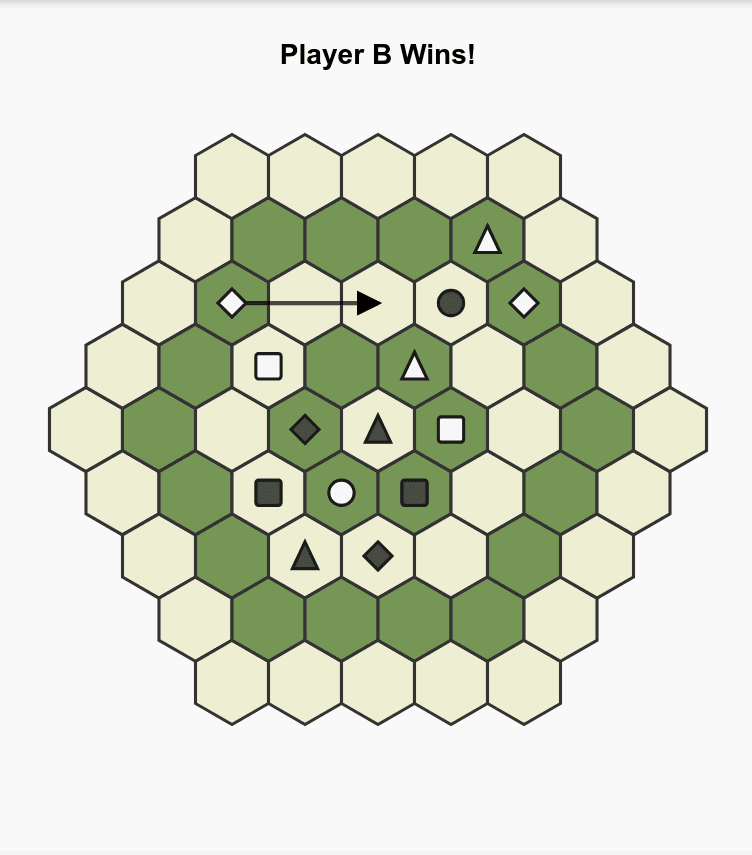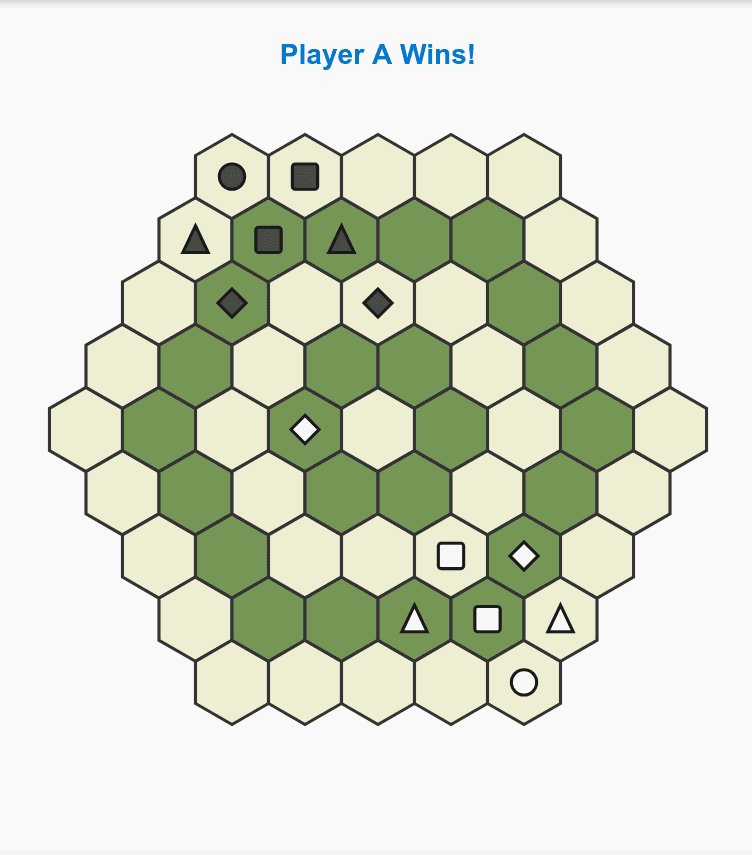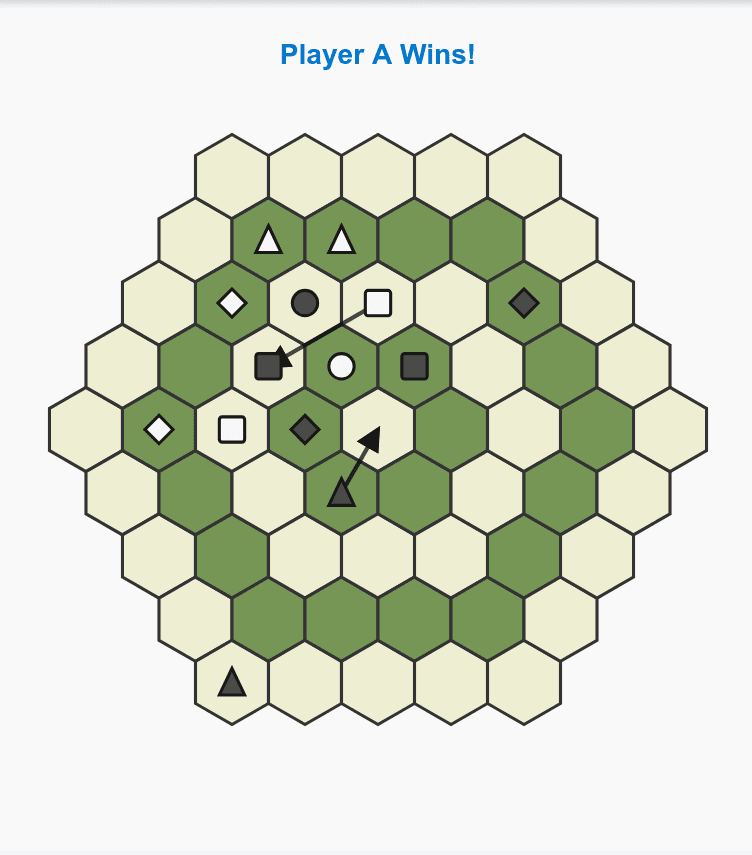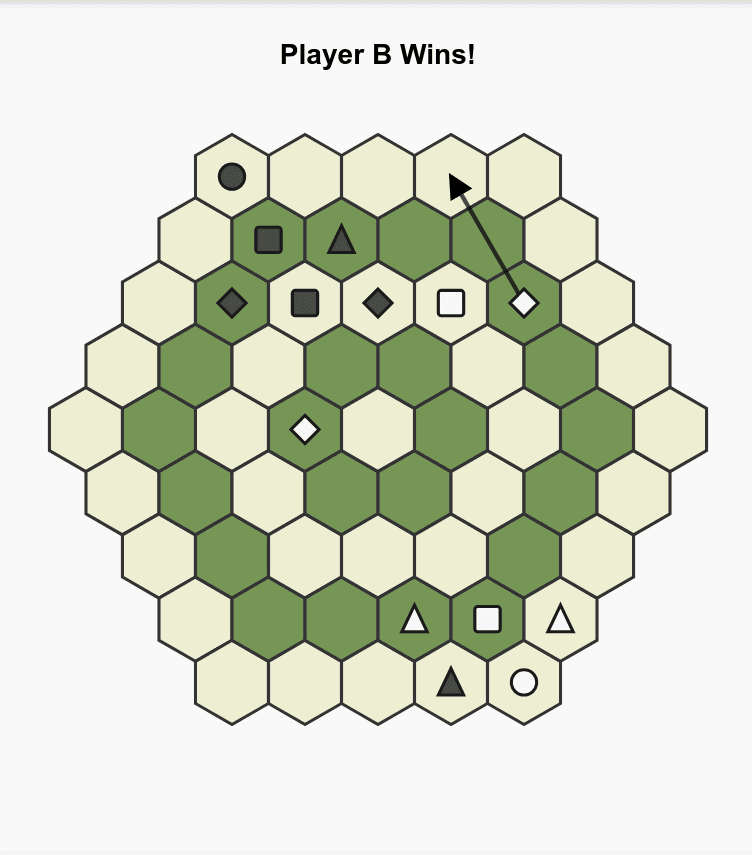APV — Rules of Engagement
← Back to GameA deterministic strategy game of operational geometry and foresight.
Objective
Victory is achieved by immobilizing the opponent’s Pivot (●), the central command node. No pieces are destroyed; success comes through encirclement, spatial control, and anticipation.
Setup
- Hexagonal grid with radius 4 (61 total cells).
- Each player commands seven units:
- Pivot (●) — command node · 1×
- Axis (▲) — line-control piece · 2×
- Veils (◆/■) — jump units · 4×
Movement
- Pivot (●) — moves exactly one hex in any of six directions.
- Axis (▲) — slides any number of hexes in a straight line until blocked.
- Veil (◆) — jumps exactly two hexes in any direction, ignoring the intervening hex.
- Turned Veil (■) — jumps across two adjacent directions, landing on one of six angular mid-ring positions (between cardinal axes). Must land on an empty hex.
Future Orders
After completing your normal move, you may issue a Future Order:
- Select another friendly piece and assign a legal target hex.
- The order executes automatically at the start of your next turn if unblocked.
- Only one Future Order may exist per player at any given time.
Victory Conditions
- You win if your opponent’s Pivot (●) has no legal moves and all six adjacent hexes are blocked.
- If both Pivots become immobile simultaneously, the match is a draw.

Example 1: Victory by Full Player Containment — complete immobilization through geometric lockdown of single Player's pieces.

Example 2: Loss by Suicide — the Pivot self-traps within its own formation.

Example 3: Win by Mutual Offense — mixed pattern of engagement where both sides constrain each other, but one contains the other faster.

Example 4: Reckless Loss — overextension leaves the Pivot exposed to total containment.
Reference
For the full specification and notation system, see the official rule document on GitHub: